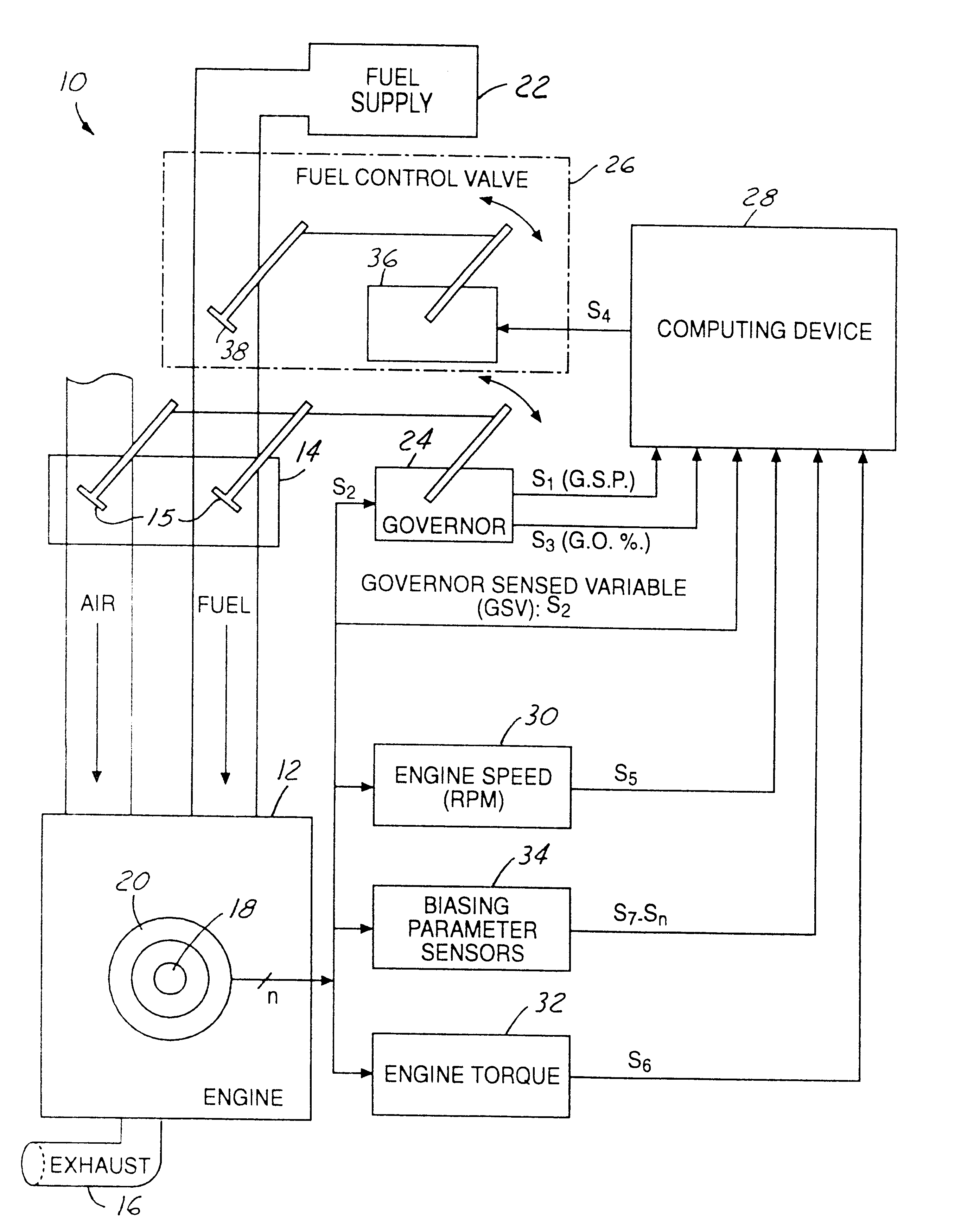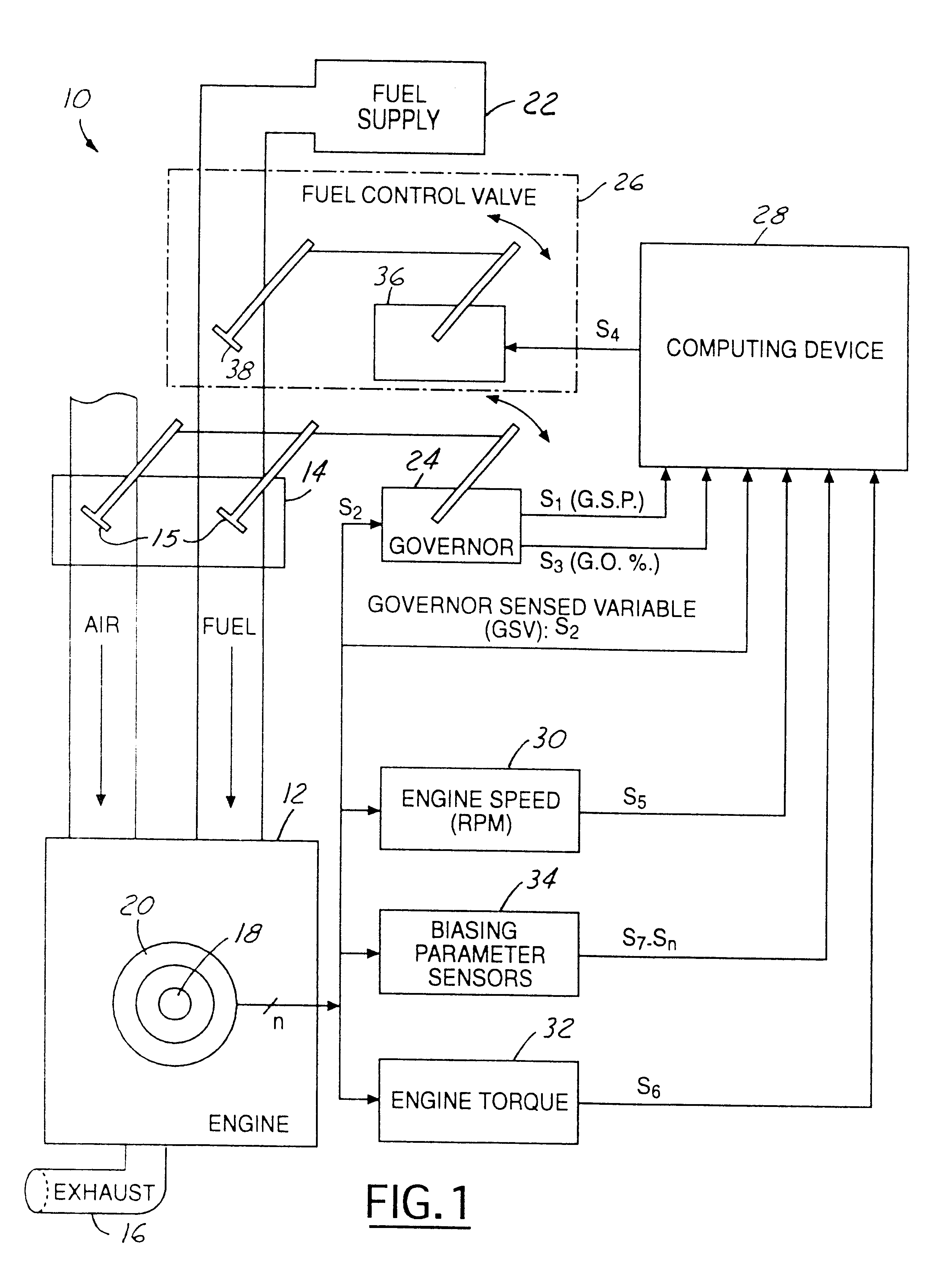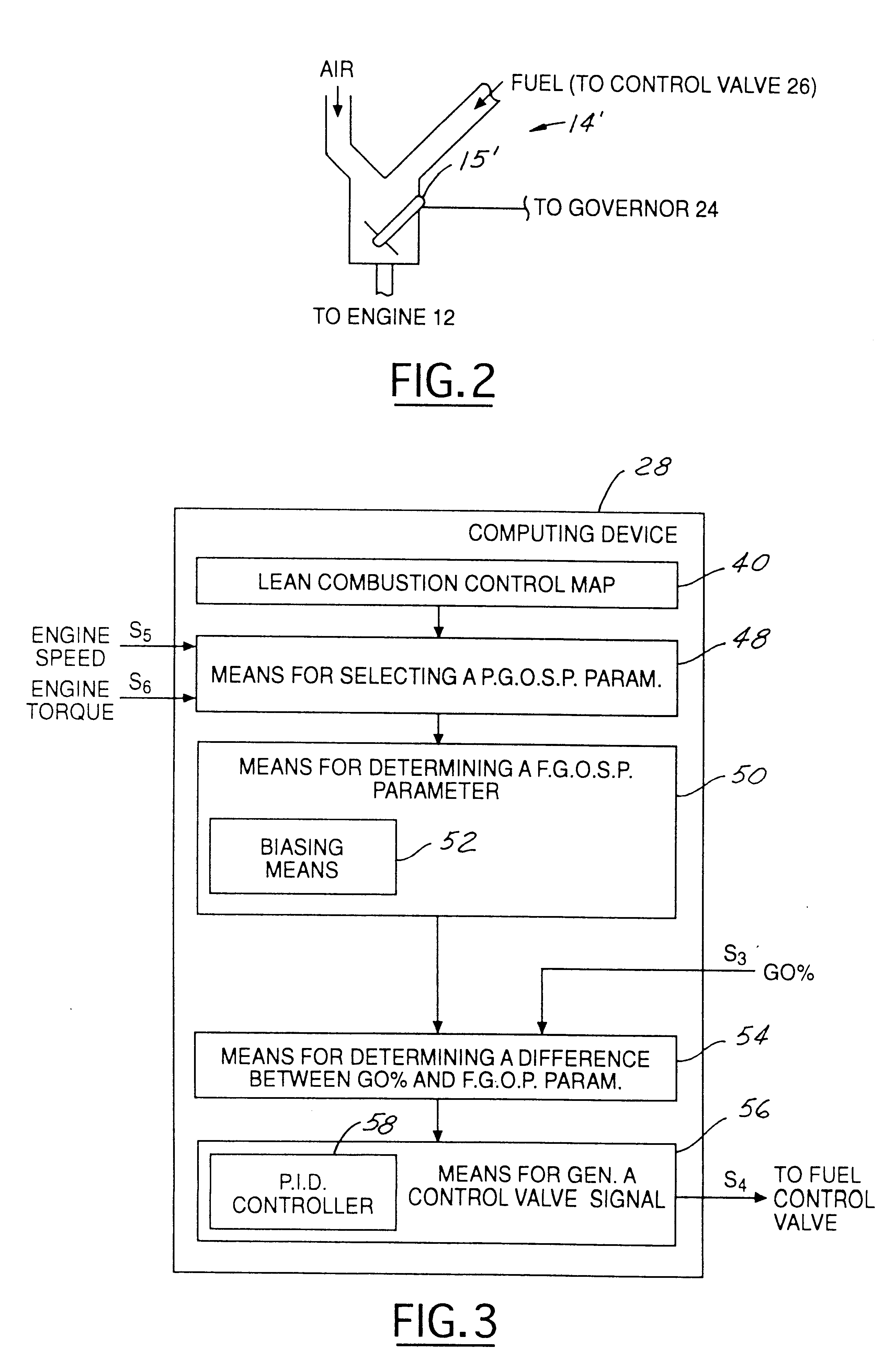However, this approach uses a relatively increased amount of fuel.
However, these approaches have shortcomings in producing reliable and effective operation.
Operation at these "lean" air-fuel ratios may not produce the output power called for; however, on the other hand, such operations may occur at air-fuel ratios not lean enough to be at a lean misfire limit of the engine.
Thus, gaseous-fueled engines lose power (sometimes referred to as a loss of
reserve power capacity) when operated at "lean" air-fuel ratios, even at air-fuel ratios substantially lean of stoichiometric, before operating erratically.
One problem generally with reciprocating engines employing conventional controls involves so-called "pumping losses."
A undesirable trait of operating at less than wide-open
throttle (WOT) is increased "pumping losses" (i.e.,
horsepower wasted by ingesting air through a flow limiting device, such as a partly closed throttle valve).
Ostensibly this failure to operate the engine at wide-open throttle (WOT) is to allow the engine to have
reserve power capacity in the event of
control system drift.
Since
control system drift could not reliably be accounted for in known engine controls, it was therefore necessary to operate with such a
reserve capacity.
As a result of pumping losses, fuel consumption of the engine is increased, thereby also increasing CO.sub.2 emissions.
In addition,
combustion of the extra fuel elevates temperatures, which in turn increases thermal stress on various engine parts such as pistons, rings, valves, heads, exhaust manifolds, etc.
This increases maintenance costs.
Maintaining an acceptable degree of air-fuel ratio optimization requires routine maintenance and calibration, which can become costly and invasive.
In addition, there are reliability concerns.
In particular, the engine can operate at air-fuel ratios rich of the lean
power loss / misfire limit, but cannot operate at all at air-fuel ratios lean of the lean
power loss / misfire limit.
Therefore, when variations, due to the above factors, occur tending to lean the already predetermined "lean" air-fuel ratio provided to the engine, drastic drop offs of
power output may be observed, with operation of the engine becoming erratic.
The
disadvantage of including this guard or
safety margin is an increase in fuel consumption, which thereby directly increases CO.sub.2 emissions, as well as elevates combustion temperatures (which increases NO.sub.x.
Known open
loop control strategies have thus been found unsatisfactory in the foregoing respects.
However, one
disadvantage of such a
system is that the control of the air-fuel ratio can only be as accurate as the sensor output itself.
Second, while such a sensor does measure a combustion-related event, it does not directly measure lean
power loss / misfire, per se.
A third
disadvantage involves the fact that this approach is unable to detect (and thus track) factors such as ambient atmospheric changes, changes in fuel characteristics or traits (e.g., BTU per SCF,
flame speed,
hydrogen content, etc.), and sensor degradation / drift.
A fourth disadvantage involves the fact that such sensor-based systems require regular calibration and I maintenance checks, which increases maintenance costs.
A fifth disadvantage is that such systems have an undesirable failure mode (i.e., sensors may fail in an undesirable fashion, rendering the engine inoperative).
Sixth, as the engine itself changes with condition (e.g., wear), desired target values change (to which the system is controlled using the sensor output) and failure to make ongoing compensation to the predetermined "target" values will cause the controlled air-fuel ratio to deviate from the programmed optimum.
As noted above, including a "safety" margin generally results in increased fuel consumption, increased CO.sub.2 emissions, as well as elevated combustion temperatures (with the resulting undesirable effects thereof noted above).
This "dithering" has in many instances an undesirable response characteristic.
When the power required of the engine is such that it cannot be operated with the air and
fuel delivery apparatus in a WOT state, operation at the lean misfire continues to occur.
It is a general characteristic of gaseous-fueled internal combustion engines that they can be operated at air-fuel ratios lean of stoichiometric, not producing the power called for, but not yet lean enough to be at the lean misfire limit.
That is, gaseous-fueled engines lose power (sometimes referred to as a loss of
reserve power capacity) when operated extremely lean of stoichiometric before operating erratically.
In addition, it is known that reciprocating internal combustion engines expend and thus lose energy to ingest air for combustion, cooling and
scavenging purposes.
The more restricted an air inlet is, the higher the pumping losses.
In the art, however, the ability to operate with an unrestricted ("wide open") air and
fuel delivery apparatus is compromised in that many such air and
fuel delivery apparatuses depend on a reduction in air pressure to ingest fuel, and then mix the fuel and air together.
That is, the PGOSP shall be the governor output beyond which further "leaning" results in an unacceptable amount of engine speed variation (i.e., RPM
instability), a reduction in power below a desired amount or unacceptable engine misfire.
If the engine health degrades appreciably, operation may become unstable, which may in turn cause an alert to be asserted whereby the operator or
control system may take
remedial action.
 Login to View More
Login to View More  Login to View More
Login to View More 


